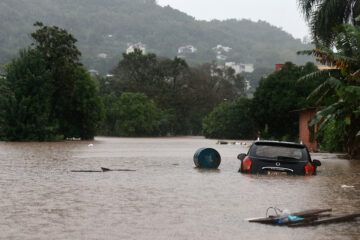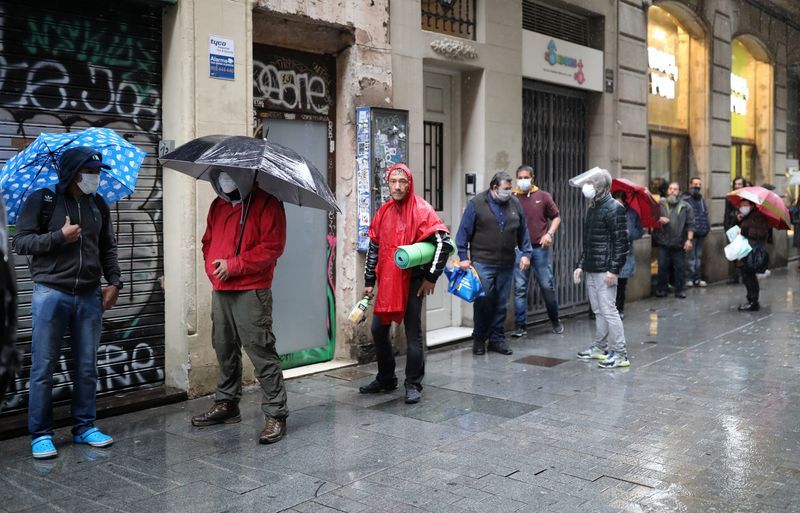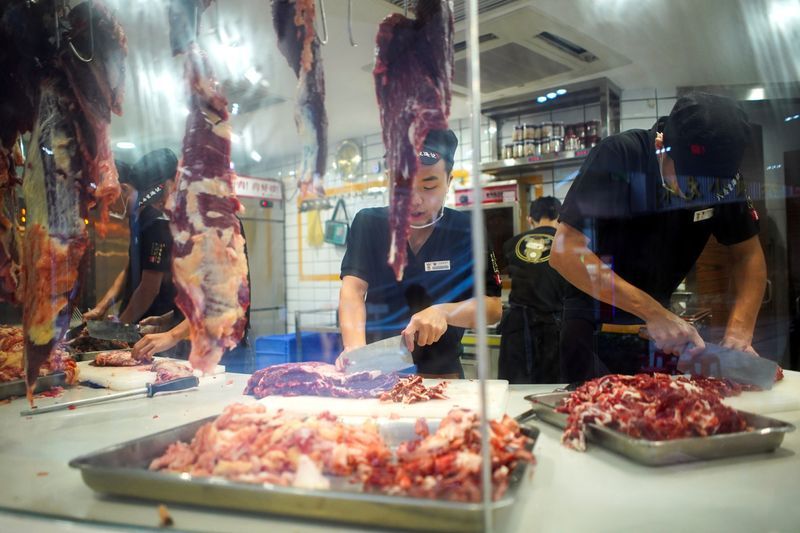Thousands flee as Typhoon Koppu hits Philippines
Powerful Typhoon Koppu wrecked houses, tore down trees and unleashed landslides and floods, forcing thousands to flee as it pummelled the northern Philippines Sunday, officials said.
At least eight people have been reported missing and rescue operations are underway in the rice-farming province of Nueva Ecija where rivers burst their banks and flooded several villages, regional authorities said.
"People are asking for help because the floodwaters are rising. The rescuers cannot penetrate the area as of now," Nigel Lontoc, the assistant civil defence chief for the region, told AFP.
The social welfare department said more than 15,000 people had already been evacuated from Koppu\’s path and officials said more are expected to flee as the storm grinds its way northwards across the main island of Luzon before it is forecast to leave the country on Wednesday.
Koppu made landfall before dawn on the coast of Casiguran, a remote fishing town of 31,000 people, remaining near-stationary for seven hours and whipping the area with gusts of up to 210 kilometres (130 miles) an hour.
"Koppu tore off roofs of homes made of light materials. Rivers overflowed, and the roads to the area are blocked by downed power pylons and trees," Lontoc said.
By late morning the typhoon\’s intensity had weakened slightly to gusts of 185 kilometres an hour while moving northwest over the Pantabangan Dam in the southern foothills of the Cordillera, the country\’s largest mountain range.
Aurelio Umali, governor of Nueva Ecija told ABS-CBN television that rescuers in villages adjoining the Cordillera were having difficulty reaching residents trapped by floodwaters.
"Some villages are no longer accessible…. I was told that rescuers saw two human bodies floating in the water," Umali said.
Lontoc said the two bodies have not been recovered.
Three people in the coastal resort town of Baler, near Casiguran, are missing after a large wave struck their house, Lontoc said, and three fishermen are also missing on Manila Bay.
Despite the storm weakening, the authorities warned heavy rains could also trigger flash floods and landslides in the Cordillera, home to more than 1.6 million people and known for its spectacular rice terraces carved on the slopes of towering mountains.
"I must emphasise that this is just the start. People must remain alert while we try to pick up the pieces in areas already hit," Alexander Pama, head of the National Disaster Risk Reduction Council, told reporters in Manila.
"We are strongly recommending forced evacuations in the Cordillera administrative region especially villages that are landslide- and flood-prone," Pama said.
State weather forecaster Alczar Aurelio said Koppu was expected to weaken further into a severe tropical storm by Tuesday, but would only leave Luzon, home to half the Asian archipelago\’s 100 million people, by Wednesday.
The authorities reported widespread power and communications disruptions across Luzon, with many roads and bridges also blocked by landslides, floods or fallen trees and power pylons.
Ferry services across Luzon were suspended amid rough seas while commercial aviation was also disrupted with 30 flights cancelled, two of them on international routes.
"The rain is bad to intermittent and wind is picking up," Kate Marshall, part of a reconnaissance team of the International Committee of the Red Cross assessing the region\’s relief needs, told AFP.
The Philippines is hit by an average of 20 storms each year, many of them deadly.
The deadliest and strongest on record, Super Typhoon Haiyan, destroyed entire towns in the central islands in November 2013, leaving more than 7,350 people dead or missing.
SOURCE: AFP
[do_widget_area inner_adsbar]











